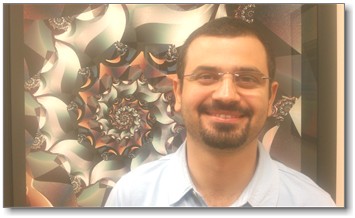


Extant virtually reality surgical simulators are predominantly focused on simulating minimally invasive surgeries where the surgeon’s interaction is with long tools through fixed access ports. Infoscitex in collobration with RPI and UCA is building on the considerable body of work generated in developing the tissue properties and image generation engines for these simulators, along with more recent work in haptic and tactile feedback, to create a realistic simulator for open surgery. Tactile feedback sufficiently detailed for textural information enables the Tactile and Haptics Enabled Open (THEO) Surgery Simulator to simulate the feel of open surgery as well as the use of tools, therefore creating a truly multi-purpose simulator for a wide range of applications.
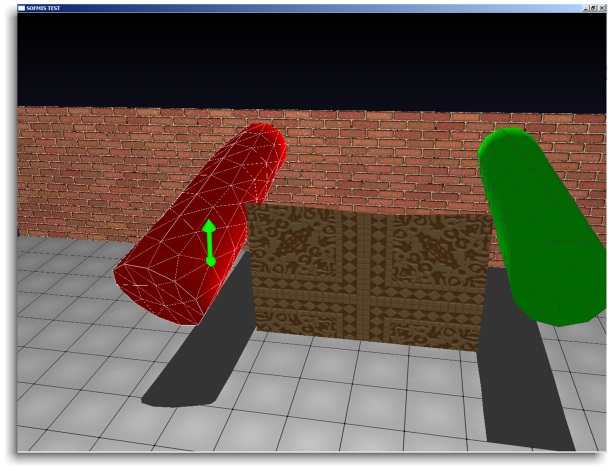
The development of a multimodal interactive simulation is a very elaborate task due to the various complex software components involved, which run simultaneously at very high rates with maximum CPU load. We design a multimodal parallel simulation framework called SoFMIS© to create rapid interactive simulations such as surgical simulations. Our framework offers great flexibility and customization allowing simulation developers and researchers to concentrate on the simulation logic rather than component development.
Related Publications:
Related Media:
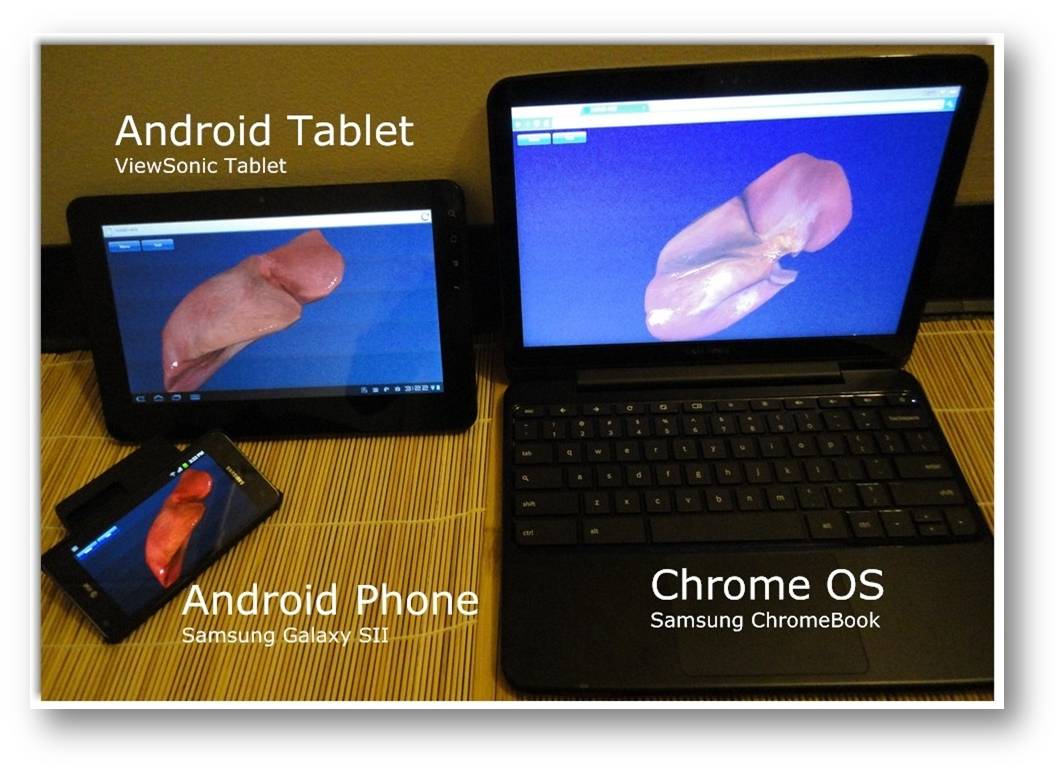
Π-SoFMIS© is a web browser-based software framework that provides accessibility, portability, and platform independence for medical simulation. Typical medical simulation systems are restricted to the underlying platform and device, which limits widespread use. Our framework allows realistic and efficient medical simulation using only the web browser for anytime anywhere access using a variety of platforms ranging from desktop PCs to tablets. The framework consists of visualization, simulation, and hardware integration modules that are fundamental components for multimodal interactive simulation. Benchmark tests are performed to validate the rendering and computing performance of our framework with latest web browsers including Chrome and Firefox. The results are quite promising opening up the possibility of developing web-based medical simulation technology.
Related Publications:
Related Media:
You can find our presantation at WebGL Camp #4 (starting at 22':21'') hosted by Mozilla, in Silicon Valley
Cervical disc replacement is one of the most challenging surgical procedures in the medical field due to the deficiencies in available diagnostic tools and insufficient number of surgical practices For physicians and surgical instrument developers, it is critical to understand how to successfully deploy the new artificial disc replacement systems. Without proper understanding and practice of the deployment procedure, it is possible to injure the vertebral body. Mixed reality (MR) and virtual reality (VR) surgical simulators are becoming an indispensable part of physicians’ training, since they offer a risk free training environment. In this project, MR simulation framework and intricacies involved in the development of a MR simulator for the rasping procedure in artificial cervical disc replacement (ACDR) surgery are designed and developed.
Related Publications:
Related Media:
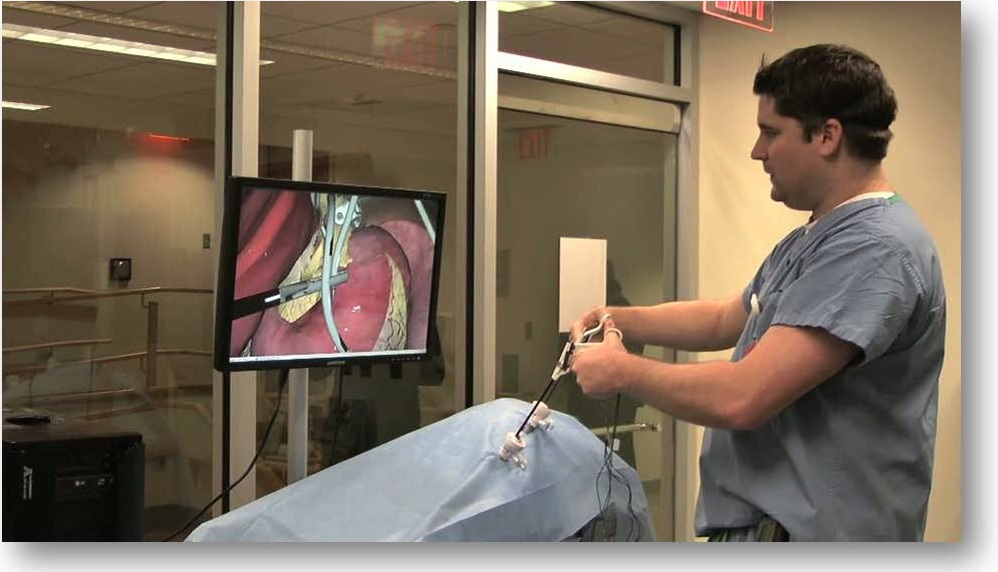
Laparoscopic Adjustable Gastric Banding (Lap-Band) is the second most common weight loss procedure done in USA. The V-Band© simulator developed at (CeMSIM) at Rensselaer Polytechnic Institute trains surgeons and medical residents in this procedure before their operating room experience. The V-Band simulator has highly accurate anatomical features and can simulate multiple organs and interactions in the same scene. The V-Band© simulator follows the Pars flaccida technique for the Lap-Band placement. A custom made interface with two PHANToM Omni's (from Sensable Inc.) connected to instrumented tools provide force feedback to the user.
The V-Band© simulator underwent its first successful validation study in Janury, 2010 at the Beth Israel Deaconess Medical Center (A teaching hospital of Harvard Medical School), Boston, MA. The validation results showed that the V-Band simulator has excellent Face, Construct and Content validity.
Related Publications:
Related Media:
V-Band validation studies in Harvard Medical School
The techniques developed got media attention; You can find the online version of the artcile published on New Scientist issue:
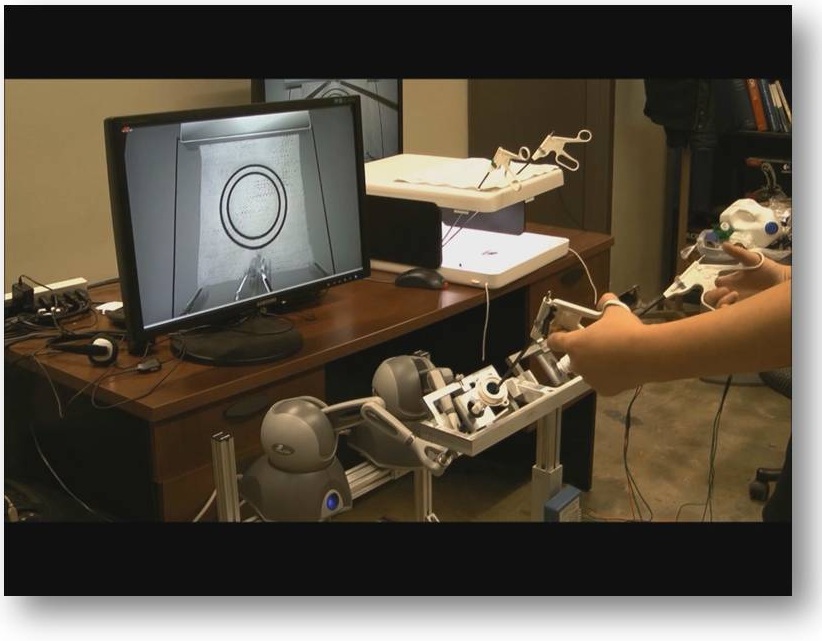
Virtual Basic Laparoscopic Skill Trainer (VBLaST©) is the virtual version of the Fundamentals of Laparoscopic Surgery (FLS) skill training toolbox that is being developed at CeMSIM at Rensselaer Polytechnic Institute. The VBLaST has custom made interface with instrumented tools connected to two PHANToM Omni's for force feedback. Currently the VBLaST© consists of four tasks namely: Peg Transfer, Pattern Cutting, Ligation Loop and Introcorporeal Suture.
Related Publications:
Coming soon.
Related Media:
V-BLAST Tasks
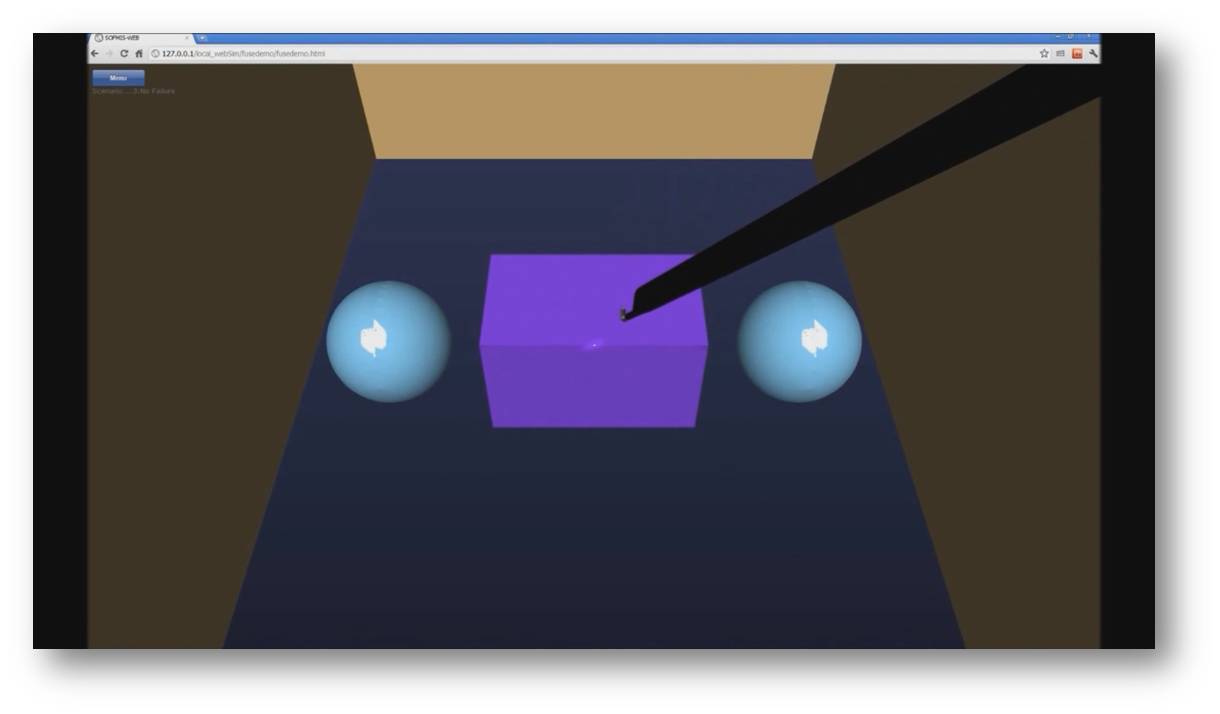
Electrosurgery is the most commonly used surgical technique in MIS. Patient injury can occur during electrosurgery due to improper use of tools, techniques and defects. In this work, for the first time, an interactive VR simulator was developed to illustrate three major mechanisms through which injuries can occur while performing electrosurgery.
Related Publications:
Related Media: